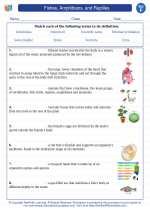Fishes, Amphibians, and Reptiles
Fishes
Fishes are cold-blooded vertebrates that live in water and use gills to breathe. They are equipped with fins for swimming and scales for protection. Fishes lay eggs and undergo external fertilization. Some examples of fishes include salmon, tuna, and goldfish.
Amphibians
Amphibians are cold-blooded vertebrates that can live both in water and on land. They undergo metamorphosis, starting their lives as aquatic larvae and later developing into air-breathing adults. Amphibians have moist skin and lay eggs in water. Frogs, toads, and salamanders are examples of amphibians.
Reptiles
Reptiles are cold-blooded vertebrates that live primarily on land. They have lungs for breathing and are covered in scales or hard shells. Reptiles lay eggs on land and do not undergo metamorphosis. Examples of reptiles include snakes, turtles, and crocodiles.
Study Guide
- What are the key characteristics of fishes?
- Describe the life cycle of amphibians.
- How do reptiles differ from fishes and amphibians?
- Provide examples of a fish, an amphibian, and a reptile.
- Explain the importance of gills for fishes and lungs for reptiles.
◂Science Worksheets and Study Guides Sixth Grade. Fishes, Amphibians, and Reptiles

 Activity Lesson
Activity Lesson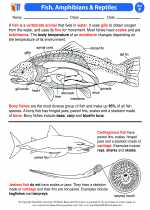
 Worksheet/Answer key
Worksheet/Answer key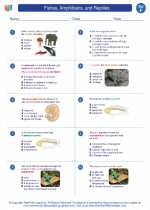
 Worksheet/Answer key
Worksheet/Answer key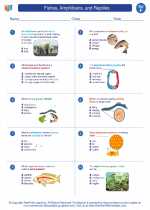
 Worksheet/Answer key
Worksheet/Answer key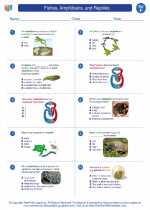
 Worksheet/Answer key
Worksheet/Answer key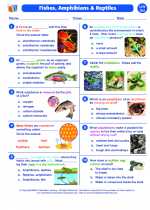
 Vocabulary/Answer key
Vocabulary/Answer key
 Vocabulary/Answer key
Vocabulary/Answer key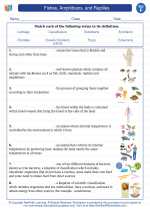
 Vocabulary/Answer key
Vocabulary/Answer key
 Vocabulary/Answer key
Vocabulary/Answer key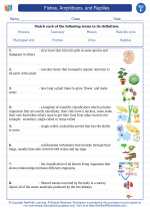
 Vocabulary/Answer key
Vocabulary/Answer key